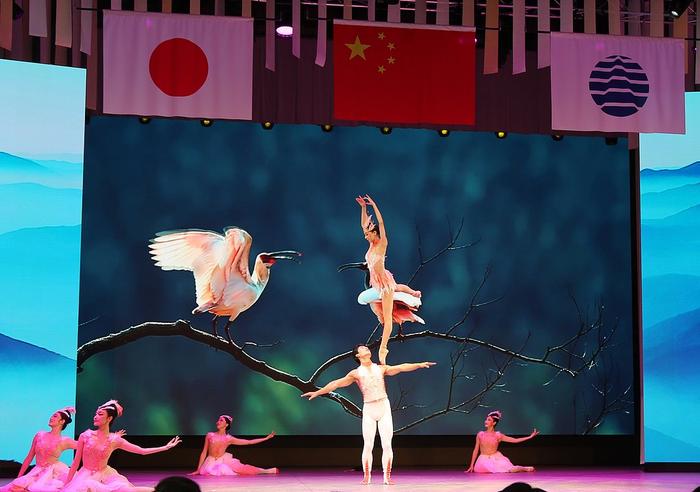
On the 11th day of the month, the China National Pavilion Day was held at the Osaka World Expo in Japan. More than 400 people from the political, business, friendly groups, media, and various national pavilion representatives from both China and Japan participated in the event. He Lifeng, member of the Political Bureau of the CPC Central Committee and Vice Premier of the State Council, attended the event and delivered a speech.
He Lifeng’s speech emphasized that the World Expo is an important platform for promoting cultural exchanges, social progress, and enhancing friendship among countries. The Chinese government attaches great importance to its participation in the Osaka World Expo. Speaking about the relationship between China and Japan, He Lifeng expressed that China is willing to work with Japan to implement the important consensus reached by the leaders of both countries, and is committed to promoting the strategic mutually beneficial relationship between China and Japan and building a constructive and stable relationship that meets the requirements of the new era.
According to the reports from Japan’s “Asahi News” on the 11th day of the month, during the China National Pavilion Day event, the Chinese side introduced the theme of the China Pavilion – “Building a Community of Life with Nature – A Green Future Society”, as well as information on exhibits such as traditional images presenting the 24 solar terms. Cultural performances were also organized, including traditional musical instrument performances, songs and dances.
“There were women dressed in traditional costumes playing erhu, as well as dance performances and performances featuring red-crowned cranes, which symbolize the friendship between China and Japan,” said a report from Japan’s Kyodo News Agency. The Japan Economic News mentioned that when an acrobatic performance featuring red-crowned cranes took place, the audience broke into warm applause. Japan’s news agency also focused on the fact that at the end of the performance, a Chinese singer sang a popular song by Japanese pop group SMAP, “The Only Flower in the World,” which brought the audience to its feet.
The China Pavilion is one of the largest foreign self-built pavilions at this Expo, covering an area of about 3,500 square meters. Wu Yingjie, director of the China Pavilion and a researcher at the Japan Research Center of the University of International Business and Economics, introduced that since its opening on April 13th, the China Pavilion has received nearly 800,000 visitors from various countries.
Japanese officials who attended the China National Pavilion Day included Takeshi Watarai, Minister of Economy, Trade and Industry, and Yu Moriyama, President of the Japan-China Friendly Parliamentarians League and Secretary General of the Liberal Democratic Party. According to Japanese media reports, Watarai said that both China and Japan share a culture of characters, and during the COVID-19 pandemic, they sent each other support materials with poems and haiku verses, which “touched the hearts of many people in both China and Japan.” Moriyama said, “There are still many common issues facing (China and Japan), and cooperating in solving these issues will bring a bright future to the world.”
Wu Yingjie, a researcher at the Japan Research Center of对外经济贸易大学 who spoke to Global Times on the 11th day of the month, said that this year’s Osaka World Expo is an important opportunity to showcase the willingness for cooperation between China and Japan, and as an international event, it provides a platform for economic cooperation between the two countries.
He Lifeng also had friendly exchanges with Yu Moriyama, Secretary General of the Liberal Democratic Party and representatives from economic groups in Kansai.
Wu Yingjie analyzed that recently, there has been an increase in high-level visits between China and Japan, with personnel exchanges gradually resuming. Although there are still challenges facing Sino-Japanese economic and trade relations, opportunities for cooperation can be explored through platforms such as the Osaka World Expo. By optimizing the policy environment and enhancing mutual trust among civilians, both countries can work together to create a favorable environment for promoting Sino-Japanese economic and trade relations.